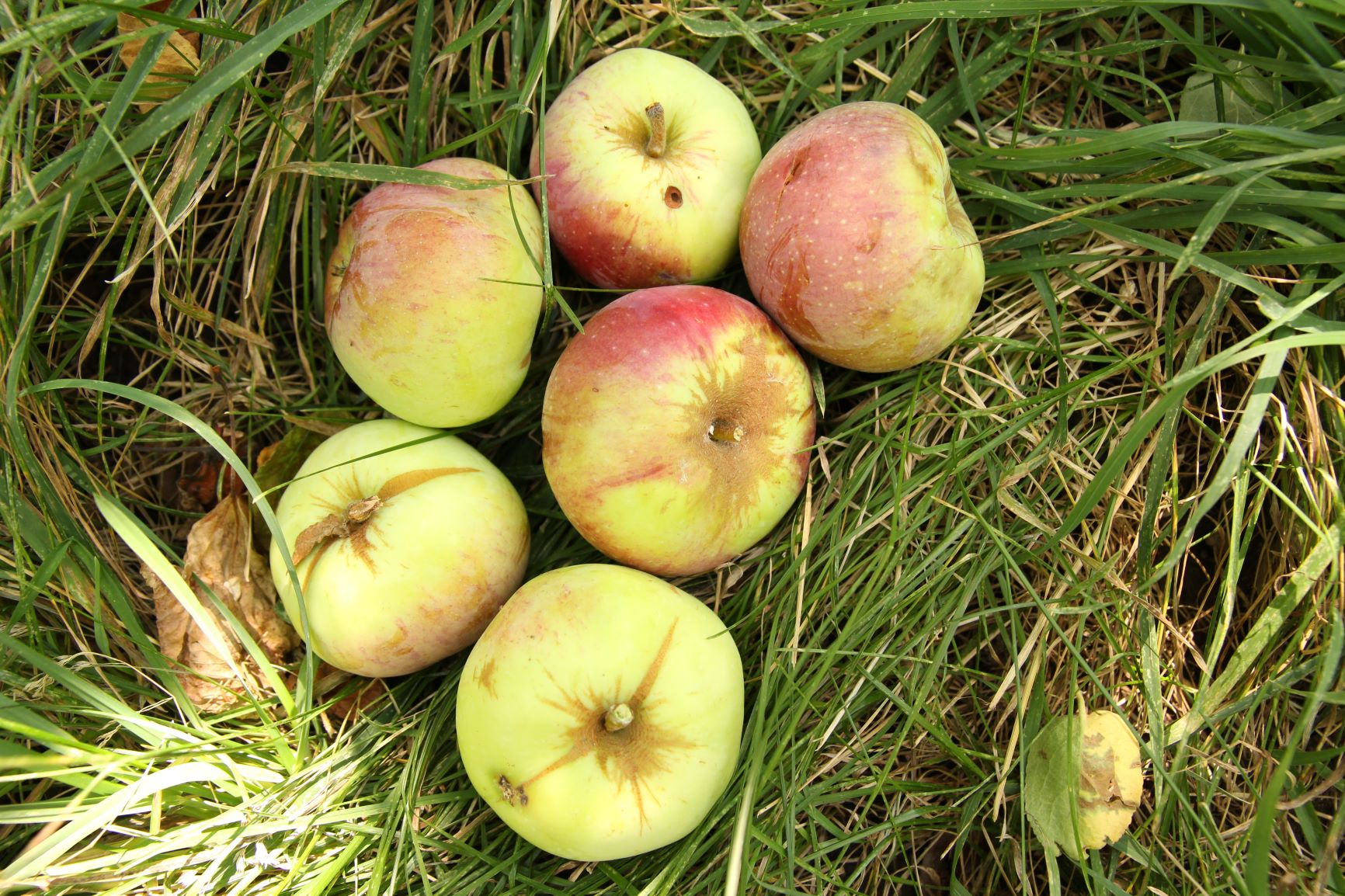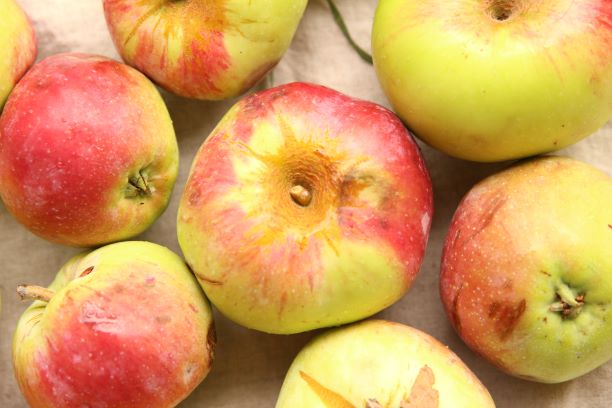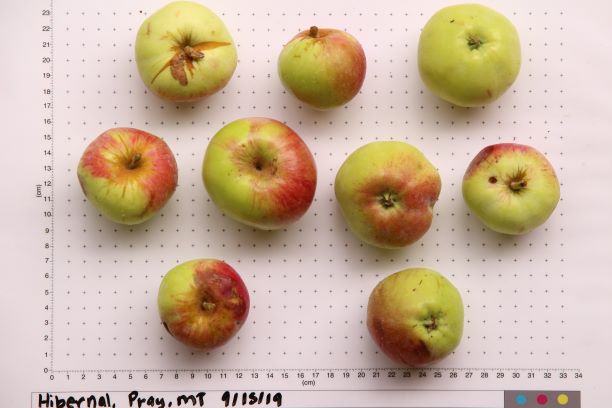Hibernal
Fruit Description
Size: Medium to large.
Shape: Flat, flat-round, sometimes conical. Lop-sided, irregular, ribbed or angular.
Skin: Green to yellow green or almost whitish green ground color. Crimson or scarlet flush with splashes of stripes, russet radiating from cavity. Small white or occasionally larger russeted dots. Skin is tough but smooth, light bloom.
Stalk (stem) and Cavity: Medium to short, thick stem, protruding, sometimes with fleshy bump at tip or tapering at center. Cavity acute, large, deep. Thick, bumpy russetting radiates irregularly from cavity.
Basin: Shallow, narrow, obtuse, wrinkled.
Calyx (Eye): Large, flat convergent, partially open, open or sometimes closed.
Core (Vertical): Small, axile, calyx tube funnel shaped, core lines meeting. Stamens median.
Carpels and Axial Sac (Transverse): Straight sided, pointed, sometimes round-ovate. Axial sac large or none (meeting).
Seeds: Small, short, obtuse, dark brown.
Flesh: Yellow, firm, coarse, juicy.
Flavor: Subacid, astringent.
Additional Notes
Synonyms: 'Hoskins', 'Juicy Burr', 'Leiby', 'Lejanka', 'Orsimui', 'Osimui', 'Ostrakoff', 'Recumbent', 'Roma', 'Romna', 'Silken Leaf'.
First Recorded: Two records, one imported to U.S. between 1870 and 1880, another claims sent to Russian around this time period from the U.S.
Origin: Likely Russia
Bloom time: Mid
Harvest: Late
Use: Culinary, not particularly known for its fresh eating as the flavor is lacking. Prized as a hardy tree with qualities for northern climates and remote locations.
Storage: Moderate, will store until about January.
Disease: Appears to be resistant to several diseases including scab, fire blight and juniper apple rusts.
Tree: Known to be vigorous, prolific and early bearer. Extremely hardy. Often used as rootstock for less vigorous cultivars. Branches stout, horizontal or drooping, curved or crooked.
Parentage: Unknown
Frequency in Montana Orchards based on DNA testing: Low
Lookalikes: 'Alexander', 'Wolf River'
History
The 'Hibernal' is another apple with a sordid past. Some records indicate it was one of several cultivars imported from Russia around 1870 as part of an effort to provide cold hardy apples for settlers moving west. Others report it originated in the U.S. and was sent to Russia during this same time period.
As a very cold hardy and vigorous tree it was often used as rootstock. Trees have been located through genetic testing and physical identification east of the divide near Livingston and in the Ruby Valley. Reported as a great sauce or pie apple by several sources, but not typically prized for eating. As a triploid, it is not useful as a pollinator.



References
Hedrick, U. P. (1922). Cyclopedia of hardy fruits. New York: The Macmillan company.
Pomiferous, 'Hibernal'. Viewed online February 22, 2021. https://pomiferous.com/applebyname/hibernal-id-1878
Bussey, D. J., & In Whealy, K. (2016). The illustrated history of apples in the United States and Canada.
Volk, G. M., & Henk, A. D. (2016). Historic American Apple Cultivars: Identification and Availability, Journal of the American Society for Horticultural Science J. Amer. Soc. Hort. Sci., 141(3), 292-301. Retrieved Feb 15, 2021, from https://journals.ashs.org/jashs/view/journals/jashs/141/3/article-p292.xml


